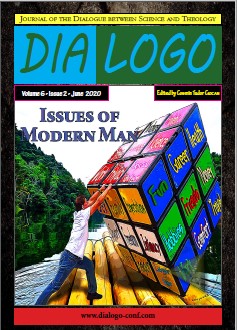The Parables of the Gospels as Transdisciplinary Way to achieve Knowledge
The Parables of the Gospels as Transdisciplinary Way to achieve Knowledge
Author(s): Ilie Sorițău, Raelene L. SorițăuSubject(s): Christian Theology and Religion, Religion and science , Syntax, Semantics, Pragmatics, Methodology and research technology
Published by: Dialogo Publishing House SRL
Keywords: All life learning; Expertise; transdisciplinarity; Truth; Life; Tree of Knowledge;
Summary/Abstract: This paper is presenting a precise contextual methodology to teach and learn in a transdisciplinary way, the very current message from the Gospels through the Parables, and explicitly the parable of the Sower. The method used is the generative synergistic way to integrate the knowledge in a tree of knowledge profile using five levels of representation of reality, statistics-measuring, syntax-absorbing by codes, semantics filtering by the selection, pragmatics-interacting by teaching/learning, and apobetics innovating, in order to attain the Expertise as wisdom (top-down) and skills (bottom-up), the final goal being the Truth. A critical aspect of transdisciplinary teaching/learning is the use of the creative expression to engage the learner using their outer senses of sight, sound, taste, touch, and smell, as well as their inner senses of imagination, intuition, and impulse. In the parable of the Sower, an exceptionally special story is set up where the Sender, Jesus Christ, describes the individuals within the context of the story through heart attitudes and actions stemming from their will. The listener or reader of the parable, as receivers of the synergistic contextual message, is drawn into the story and identifies immediately with the character that describes their heart attitude. It is also a predictor of what decision they will make and what road they will take – accepting the Truth and walking in obedience or rejecting the Truth and following after their own heart’s desire. The purpose of telling the parable is two-fold. First, for those who have ears to hear, it means to reveal the meaning and receive the message, which is Himself (the Sender of the message) and understand His Kingdom, as the place where the knowledge is attained in its highest form and in the deepest way through communion. Secondly, for those who do not have ears to hear, the meaning will remain concealed, exposing their lack of belief.
Journal: Dialogo
- Issue Year: 6/2020
- Issue No: 2
- Page Range: 63-70
- Page Count: 8
- Language: English

